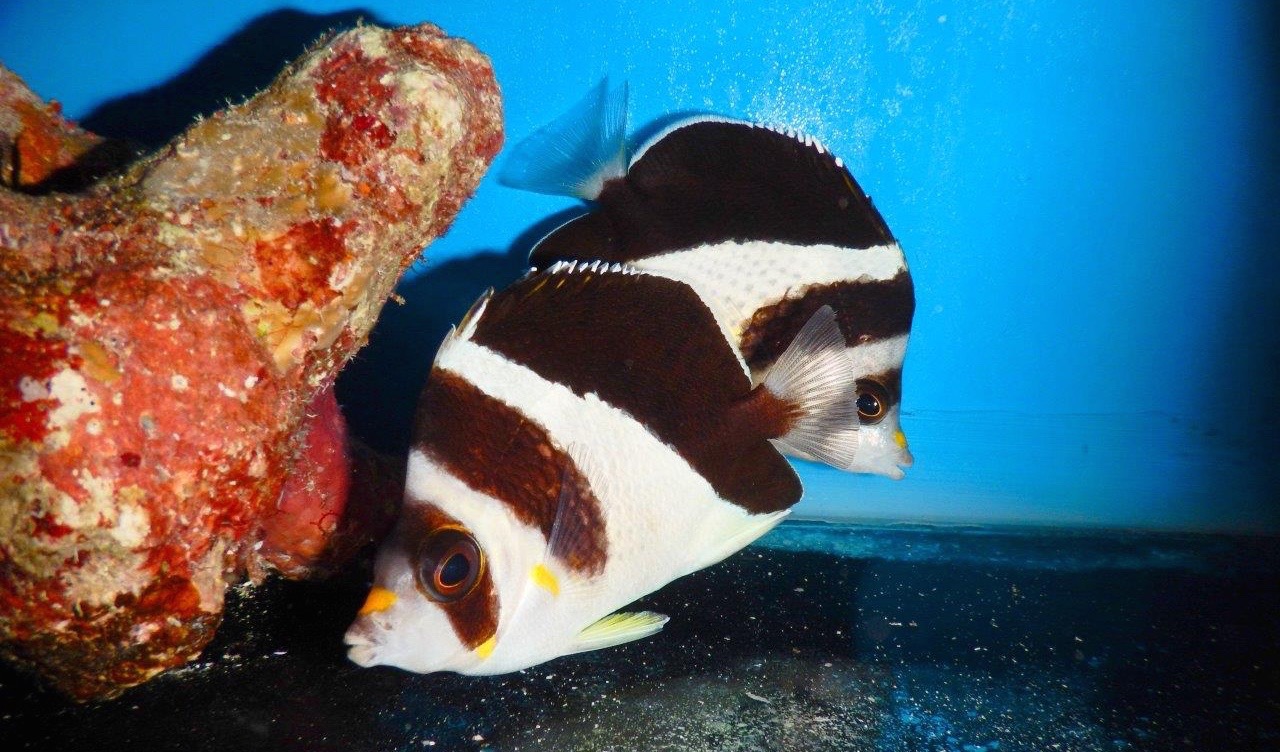The family Chaetodontidae is well represented by ten genera. Of which, the most populous Chaetodon is home to several subgenera, one of which is the eternally fascinating Roaops. This small subgenus comprises of five handsome species, including the dapper, monochromatic Chaetodon burgessi.
C. burgessi is a highly virulent species, and it is the most widely distributed of the pacific Ocean Roaops. The species is found throughout Indonesia, Philippines and north to Okinawa. It spreads eastwards to Palau, Guam, Papua, the entire Melanesia and parts of Micronesia. In the Indian Ocean, this species is replaced by its allopatric sister, Chaetodon mitratus. The recent documentation of this species from Cairns Marine represents a new extension of its geographical distribution into the Coral Sea region.

In typical Roaops fashion, this species is deepwater, frequenting steep reef walls and slopes in excess of 45m (140ft). This pair was collected in particularly deep reefs, over 80m on a rebreather unit. While the species itself may not stir as much excitement as some of the other Coral Sea residents (i.e Cirrhilabrus squirei, Bodianus cf. neopercularis, Rabaulichthys squire etc.), it is an important documentation nonetheless, especially in the Coral Sea; a biogeographical region that is prone to endemic fauna and reef fish speciation. At least we know that this species appears to maintain phenotypic and possibly genetic connectivity and homogeneity in this region.
The truncation of this post foreshadows a more complete, thorough review of the subgenus Roaops that Joe Rowlett and I are co-writing.



